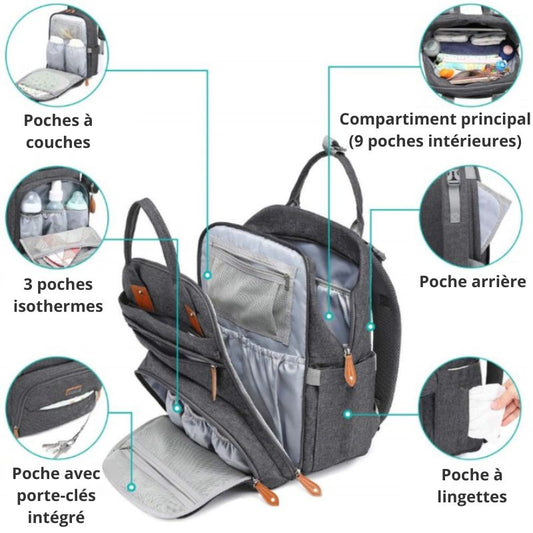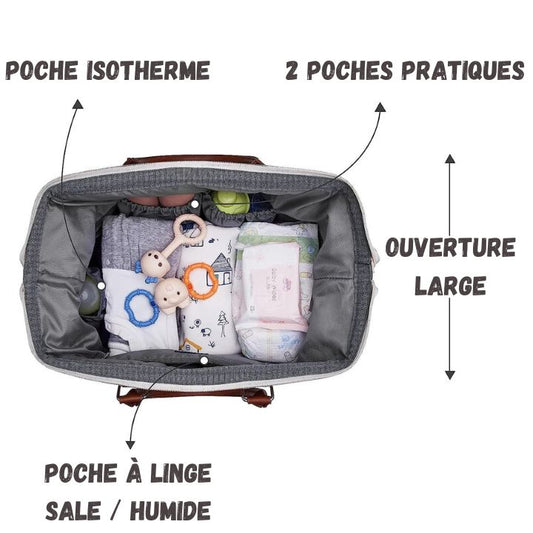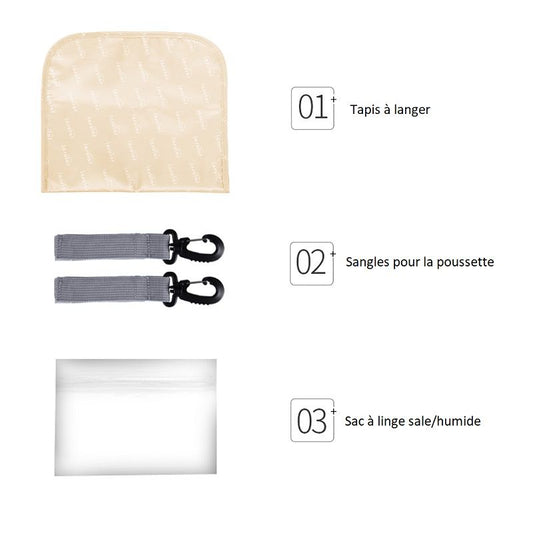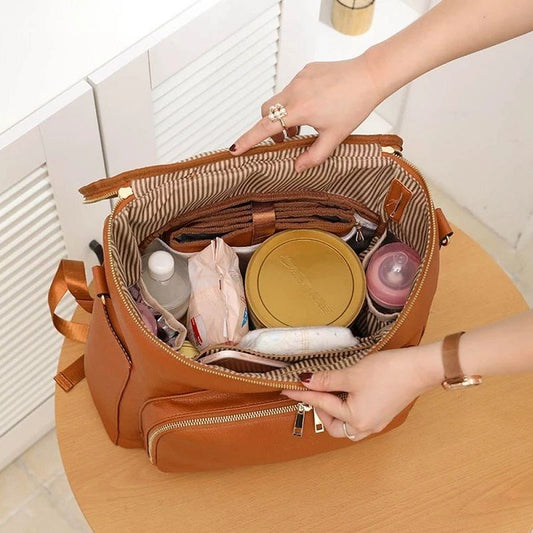So far, flu seasons have been challenging for healthcare professionals, families, and patients. Thousands of people are getting sick, and the terrible stories we read in the media are causing a lot of stress. So, I decided to summarize some frequently asked questions and guidelines to help families cope with the flu.
Discover our Breast Pump collection.
1. What are the symptoms of the flu?
Classic symptoms of the flu include fever, cough, nasal congestion, body aches, and sore throat. Children who are starting to develop the flu may also vomit, but this is usually not the main symptom. Sometimes, people with mild flu may have a cough and congestion without a fever. Some children with the flu may also be co-infected with strep, so anyone with flu symptoms and a particularly bad sore throat should also get tested for strep, especially if the tonsils are red and swollen.
2. How long do flu symptoms last?
Typical flu symptoms (cough and congestion) can last 1 to 2 weeks, but more serious symptoms (high fever and severe body aches) usually go away within 3 to 5 days.
3. What should I do if my child has a fever due to the flu (or another viral illness) and I cannot bring the temperature down with medication?
Young children with viral illnesses tend to have very high fevers at night. On the bright side, fever is a great defense mechanism that helps children fight off infections like the flu more quickly. Some studies have shown that reducing fever with medication can make viral illnesses last longer. Since fevers are not dangerous for children, parents should not feel compelled to treat fevers with medications like acetaminophen (Tylenol) or ibuprofen (Advil/Motrin) unless the child is uncomfortable or has a history of febrile seizures (see blog post #17, Managing Fever in Children , for more information on this).
Importantly, the response of a fever to treatment is not an indicator of the severity of the illness. Panic often ensues when parents administer medication and the temperature continues to rise. Yet sometimes it is not possible to bring down a high temperature, especially at night. Allowing a child to sleep while the fever goes away on its own may be the best (and only) solution. Putting a feverish child in a lukewarm bath is not helpful and will likely make him or her cold.
4. What is the use of a rapid flu test?
A rapid flu test in a healthcare provider’s office is only helpful if it is positive. A negative flu test doesn’t tell you much because many people who have the flu will test negative. In other words, there is a high rate of false negatives with rapid flu tests. Therefore, if a person is clinically exhibiting flu symptoms, it may not be helpful to get a flu test because a negative test will NOT rule out the flu. If you and your doctor suspect you have the flu, but the test is negative, you should still consider taking Tamiflu.
5. What is the use of Tamiflu, the antiviral drug that treats influenza?
Tamiflu shortens the duration of influenza (but not other viral illnesses) by about a day. It is important to note that Tamiflu helps prevent some of the secondary complications of influenza, such as staph pneumonia and bacterial sepsis. Therefore, I generally recommend the medication if the timing is right. Tamiflu is most effective when given 1 to 2 days after the onset of illness. After 3 to 4 days, it is probably less helpful. Although Tamiflu commonly causes gastrointestinal side effects, such as diarrhea and vomiting, psychiatric side effects (such as hallucinations, delusions, and suicidal ideation) are very rare.
6. Besides taking Tamiflu, what can I do to fight the flu at home?
Take a few days off from work, school, and sports, and give your body a chance to recover. Get plenty of sleep, drink fluids with electrolytes (Gatorade is better than water for intravascular hydration), and eat healthy foods. For sick teens , adequate sleep is essential to recovery and staying healthy. Many of the teens I see in my office are vulnerable to infections like the flu because they are chronically sleep deprived. For parents of these teens, confiscating electronic devices at night can be helpful.
7. What is the use of the flu vaccine?
This year’s flu vaccine wasn’t very well-matched to the current circulating strains. However, studies show that vaccinated people generally have a milder course of illness if they do get sick, particularly if they get infected with the more virulent H3N2 strain. In line with CDC guidelines, I still recommend flu vaccines for all ages in my practice, even though it’s late in the season. This year, we could see cases of flu as late as May or early June.
8. What if my pharmacy is out of generic liquid Tamiflu and I don't want to spend €300 on branded Tamiflu?
There are inexpensive Tamiflu capsules in pediatric doses. The capsules can be opened and emptied into yogurt, applesauce, or any other food.
9. What is the risk of death from influenza?
People who are pregnant, immunocompromised, very young or very old are at higher risk of developing serious complications from influenza. The overall risk of death from influenza in this country is about 0.1%, a very low figure.
While the media is helpful in raising awareness about the complications of the flu, stories about the flu tend to focus on the most tragic cases—unexpected deaths in otherwise healthy young people. As a mother and pediatrician, my heart goes out to the families who have lost loved ones to the flu this year. Fortunately, most people who get the flu recover without any residual problems.
10. What are the signs that an adult or child is developing a secondary bacterial infection or severe inflammatory response to influenza?
Even for healthcare professionals, it can be difficult to differentiate worrisome signs from typical symptoms. Here are some signs to watch for that could indicate a child or adult is developing serious complications from the flu:
- The initial fever has improved, but then suddenly rises again, usually to a high level.
- The heart beats very quickly, disproportionate to what would be expected with fever alone.
- A reddish, blotchy rash, resembling sunburn, develops on the chest and back; staphylococcal bacterial infections frequently present with "erythroderma" on the trunk.
- A child has labored or rapid breathing; the chest wall may collapse or "retract" around the ribs. Central cyanosis, or blueness around the lips, is never a good sign.
- The skin is cold and clammy, and perfusion (blood flow) does not appear normal. Normally, the fingertips should be pink, and the color should return within a second or two after gently pinching a child's fingers. If a child's fingers are purple or blue, or if the color returns slowly after pressing the fingers, it may be time to seek emergency care, especially if the child has other concerning symptoms. Note that in children, the fingertips may appear a little bluish at the beginning of a fever, but this is usually not persistent.
- Vomiting that cannot be suppressed or that gradually worsens is another reason to seek immediate medical attention.
- A child who is not eating or drinking well, has sunken eyes, dry lips, and urinates less than usual may be dehydrated and need intravenous fluids.
- Extreme irritability, lethargy, confusion and/or unresponsiveness always require immediate evaluation.
For more information on influenza and vaccination, consult the recommendations of the Pasteur Institute .
























































